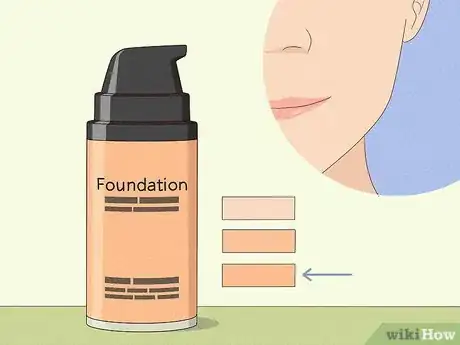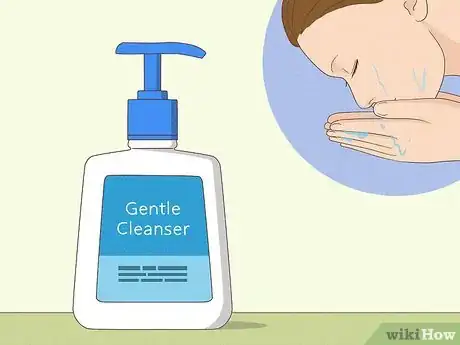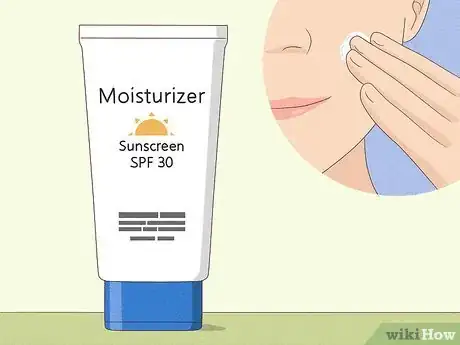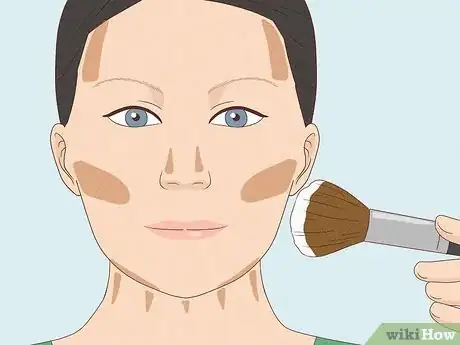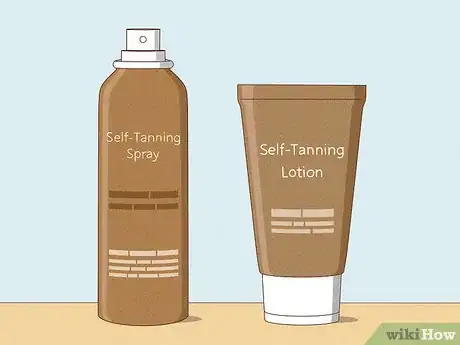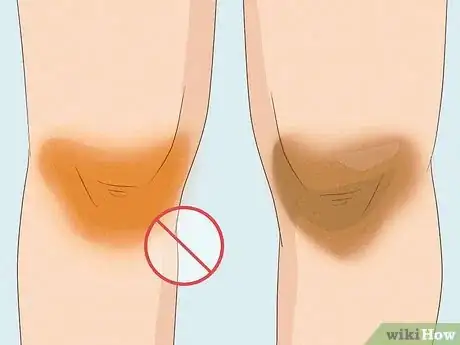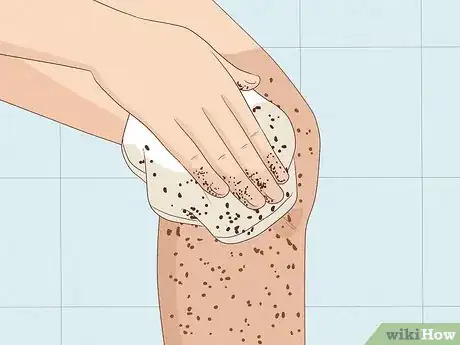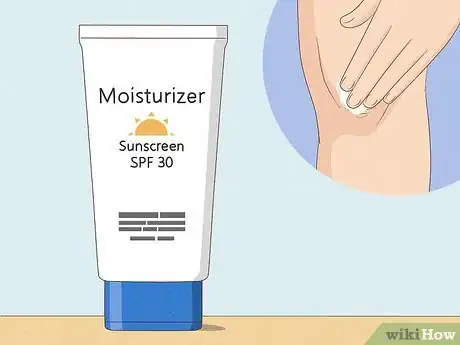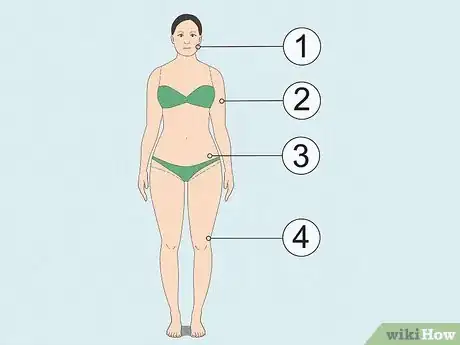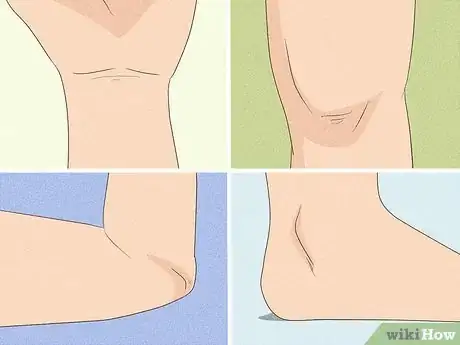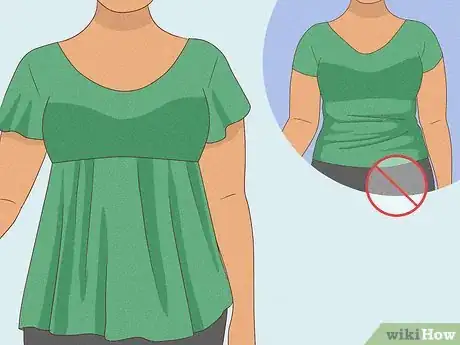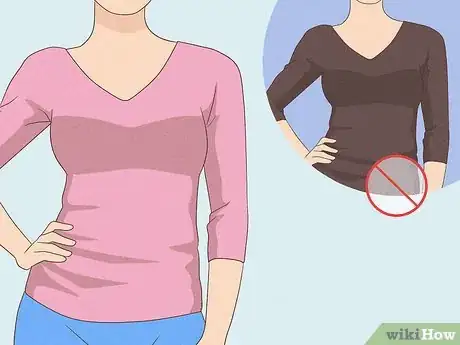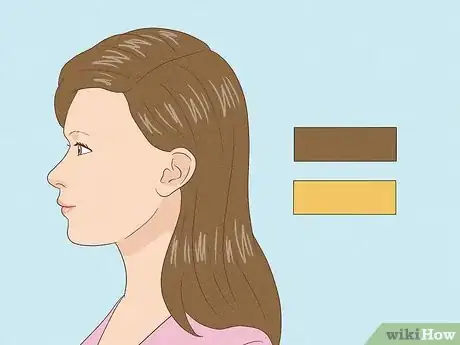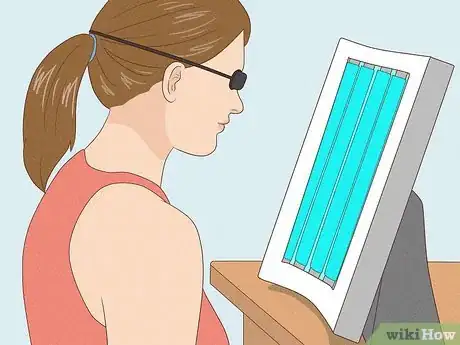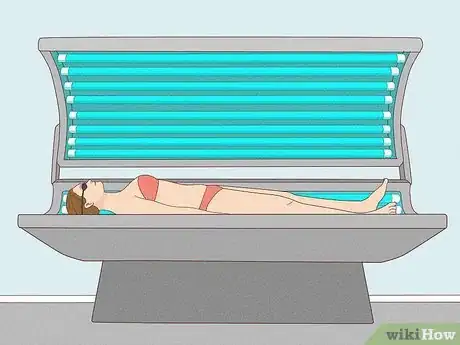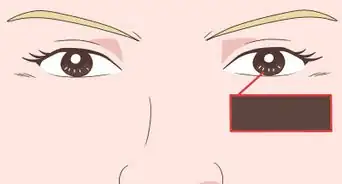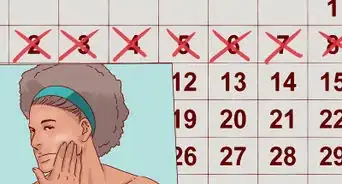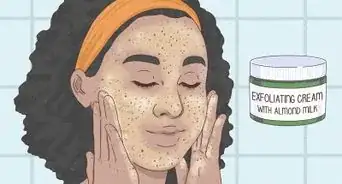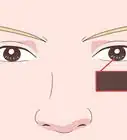This article was co-authored by wikiHow Staff. Our trained team of editors and researchers validate articles for accuracy and comprehensiveness. wikiHow's Content Management Team carefully monitors the work from our editorial staff to ensure that each article is backed by trusted research and meets our high quality standards.
There are 13 references cited in this article, which can be found at the bottom of the page.
This article has been viewed 68,866 times.
Learn more...
Some of us are embarrassed by our pale skin and believe that a little more color would be attractive. Too much sun exposure (with the accompanying darker skin tone) can be harmful to your health, but there are a few easy ways to keep your skin looking healthy and less pale. Makeup, particularly foundation and bronzer, are easy ways to add color, while some people prefer the tanning option, which covers the entire body.
Things You Should Know
- Wear foundation that's one or two shades darker than your skin tone.
- Use a brown-toned bronzer that's one shade darker than your skin to give yourself a healthy glow.
- Apply self-tanning lotion or spray to your body for sun-kissed skin.
Steps
Wearing Foundation Makeup
-
1Purchase a darker foundation makeup. Wearing a foundation color a shade or two darker than your skin color is an easy way to make your face less pale. To figure out which color might work best for you, try out a few at a local makeup counter to see which looks the most natural. If you’re having trouble figuring out which foundation might look best on you, ask one of the salespeople to help -- they often are very experienced.[1]
-
2Clean and dry your skin. For the foundation to look its best and spread properly, your skin must be clean. Use whatever you typically use to wash your face, making sure that it’s gentle on your skin.[2]Advertisement
-
3Apply moisturizer. This makes a base for the foundation. If your face is not moisturized, makeup can dry out your skin. Moisturizer is also a great way to protect your face -- many moisturizers include sunscreen.[3]
-
4Put the foundation on your face with a brush. Since you’re going a shade darker than normal, you will need to make sure that it looks natural on every part of your face. Pay close attention to the areas at the edges, blending in the makeup so that it fades into your normal skin tone on your neck or ears. Start at the middle of your face and work outward.[4]
Putting on Bronzer
-
1Choose your bronzer or blush color. Don’t use a bronzer that is more than one skin tone darker than your own. Check carefully when buying it at the store and test out a few on your face to see which color will work best for you. Avoid bronzers with orange tints -- these typically do not look good on pale skin. Go for bronzers that lean toward brown.[5]
-
2Select a bronzer that works for your skin type. Different products work well for oily, combination, and dry skins. Using testers, check at the store which products feel and spread best on your skin. Bronzers are supposed to add a healthy-looking shine to your skin, and can be very useful for making pale skin appear slightly darker. (They are not designed to make your skin look bronze, despite their name.)[6]
-
3Apply bronzer with a big brush. After getting some on the brush, tap off any excess before applying. Focus on your temples and cheekbones. Use only a little on your nose and chin, and blend a little on your neck.[7]
Tanning with Products
-
1Choose a self-tanning product that appeals to you. There are a number of products that are designed to give you a tanned look without the risk of UV exposure. Self-tanners come in an array of forms, from sprays and lotions to gels and serums. Read the instructions on each product to make sure that it will do what you want. At the makeup counter, try a little on your skin to determine which will be most comfortable on your skin.[8]
-
2Find the best shade for your skin. Pale skin does not work well with the orange tint of many self-tanners, so look for a product that is more golden. Gradual tanning products also work well with pale skin, since they just add a hint of color. Again, try each product at the store before committing to it.[9]
-
3Exfoliate. Use a wet washcloth to slough off any dry skin on any of the areas that you will be applying the self-tanner. This will allow you to spread the product easily and your skin will absorb it evenly. Pay special attention to knees and elbows, that often have drier, tougher skin.[10]
-
4Prepare your skin for the self-tanner. Pat it dry with a towel. Apply moisturizer evenly over the areas you will be applying the self-tanner. Use more on those areas with drier skin, like your knees and elbows. Try to use moisturizer with sunscreen -- self-tanners typically do not help protect your skin from the sun’s harmful rays.
-
5Apply the self-tanner in sections. By dividing your skin into sections (face, arms, torso, legs), you can wash your hands in between so your palms don’t get stained. Be sure to read the instructions on your product carefully -- each one has a different set of guidelines, depending on its form.
-
6Pay attention to your wrists, ankles, knees, and elbows. Your wrist and ankle joints will require more blending. Move your hands and feet back and forth on your joints to make sure you have all of the skin covered. Your knees and elbows will require less self-tanner because they absorb more product than other parts of your skin. You can dilute the self-tanner (check to see how on your particular product) or put lotion on top of the self-tanner.[11]
-
7Stay dry and cool. Give your skin time to absorb the self-tanner. Wearing loose clothing and staying out of the sun (and situations where you might sweat) will give your skin the best chance to get an even color. After a few hours, your self-tanner should be completely absorbed.
Using Clothing and Hair Color
-
1Do not wear strong colors. Pale skin can look even paler when paired with deep colors. Try lighter, softer shades to make your skin look less pale. Some good choices might be:[12]
- Pale pink
- Peach
- Ivory
- Light yellow
-
2Avoid oranges in both clothing and hair color. Most people with pale skin do not have orange undertones, and the color is often very unflattering to those with pale skin. It’s a strong color that essentially clashes with your skin color.
-
3Choose shades of blonde or light brown for your hair. These light shades will complement your fair skin. Hair colors with golden or orange undertones are not going to be flattering (and will probably make you look even paler).[13]
Weighing Other Tanning Methods
-
1Purchase a tanning light for your home. Though these are a fast way to give your skin some color, the UV rays from the light are harmful for your skin. The FDA and major cancer organizations caution against tanning in this way because of the risk of skin cancer.[14]
-
2Use a tanning bed. Even though this might seem like an easy and quick solution, the World Health Organization and other medical research groups caution against their use. Tanning beds are linked to an increased risk of skin cancer. The UV rays emitted by the sunlamps can cause skin cancer.[15]
-
3Go sunbathing. Again, the risk of skin cancer is high for those who sit outside in the sun’s UV rays without proper protection. Pale skin is also typically more prone to sunburn, which increases the risk of melanoma.[16]
Community Q&A
-
QuestionWhy would somebody want darker skin if people discriminate against darker skin colors?
 WikihowhelperlenaCommunity AnswerA lot of people are self conscious of their skin tones. Maybe they want to look like they were on holidays. It is their personal preferences. Even though every skin tone is gorgeous maybe they don't like theirs.
WikihowhelperlenaCommunity AnswerA lot of people are self conscious of their skin tones. Maybe they want to look like they were on holidays. It is their personal preferences. Even though every skin tone is gorgeous maybe they don't like theirs. -
QuestionIs baby powder good for my skin if I want it to be light and glowing?
 PippintookCommunity AnswerThis is not a good idea, as baby powder can cause the skin to become very dry. There are lots of reasonably priced face powders and highlighters for pale skin available as much better alternatives.
PippintookCommunity AnswerThis is not a good idea, as baby powder can cause the skin to become very dry. There are lots of reasonably priced face powders and highlighters for pale skin available as much better alternatives.
Warnings
- There is no such thing as a healthy tan. A tan is evidence of sun damage and could cause skin cancer later in life. Despite our cultural implications to the contrary, pale skin is healthier.⧼thumbs_response⧽
References
- ↑ http://www.temptalia.com/foundation-matrix/
- ↑ http://www.marieclaire.com/beauty/news/a14852/foundation-how-to-apply/
- ↑ http://www.totalbeauty.com/content/gallery/best-moisturizers
- ↑ http://www.marieclaire.com/beauty/news/a14852/foundation-how-to-apply/
- ↑ http://www.paulaschoice.com/expert-advice/makeup-tips/_/makeup-tips-tricks-skin-tone-categories
- ↑ http://www.paulaschoice.com/expert-advice/face/_/how-to-choose-and-apply-bronzer
- ↑ http://www.totalbeauty.com/content/gallery/p_top_bronzers
- ↑ http://www.harpersbazaar.com/beauty/skin-care/advice/g3599/best-sunless-tanners/?slide=1
- ↑ http://www.instyle.com/beauty/find-your-best-bronze-self-tanning-tips-you-need-know#315895
- ↑ https://www.aad.org/public/skin-hair-nails/skin-care/self-tanner-how-to-apply
- ↑ https://www.aad.org/public/skin-hair-nails/skin-care/self-tanner-how-to-apply
- ↑ http://verilymag.com/2015/10/color-theory-which-colors-suit-your-skin-tone-style
- ↑ http://www.vixendaily.com/beauty/best-hair-color-for-your-skin/5/
- ↑ http://www.fda.gov/ForConsumers/ConsumerUpdates/ucm186687.htm
- ↑ http://www.fda.gov/ForConsumers/ConsumerUpdates/ucm186687.htm
- ↑ http://www.cancer.org/cancer/cancercauses/sunanduvexposure/skincancerpreventionandearlydetection/skin-cancer-prevention-and-early-detection-sun-damage
